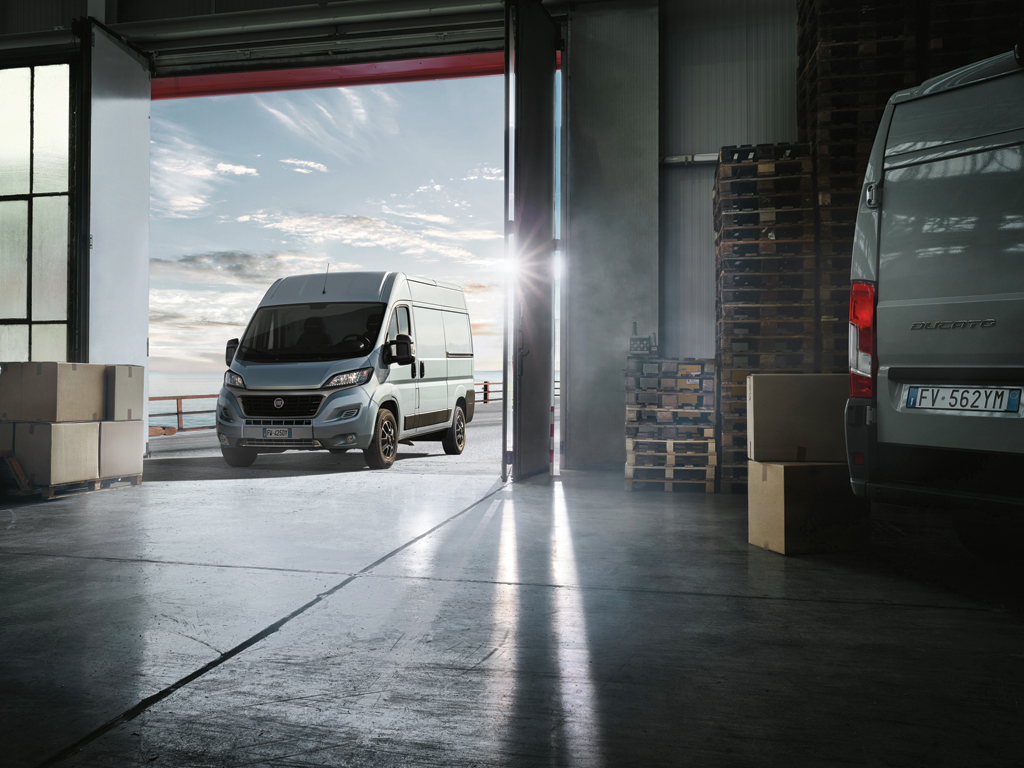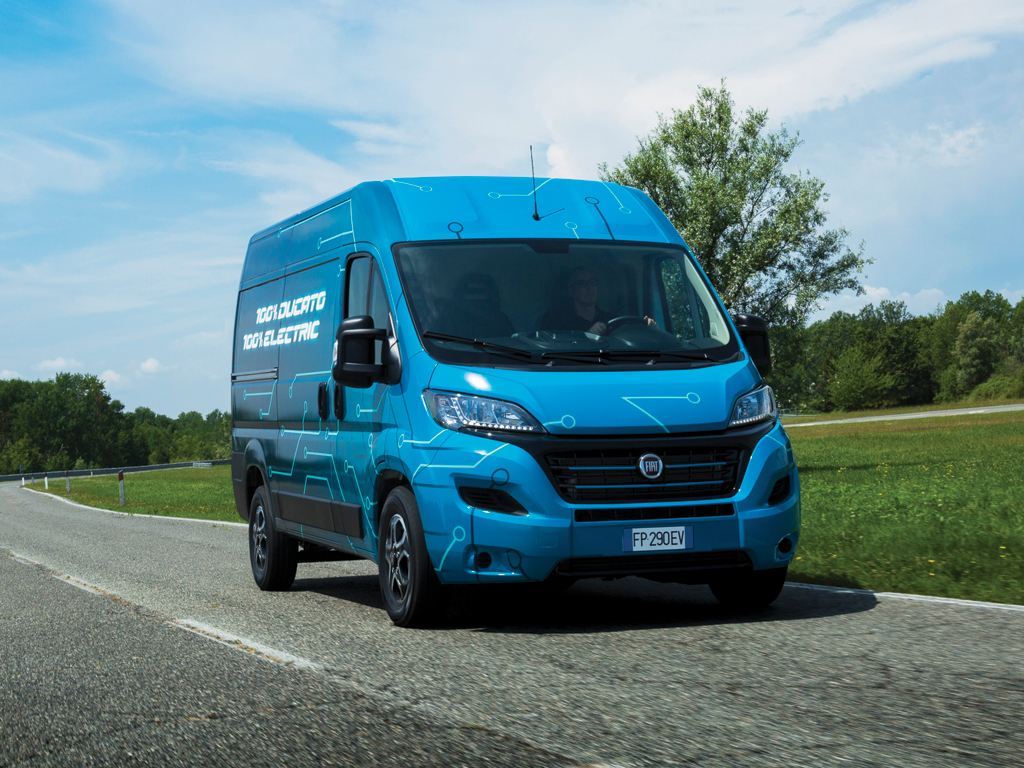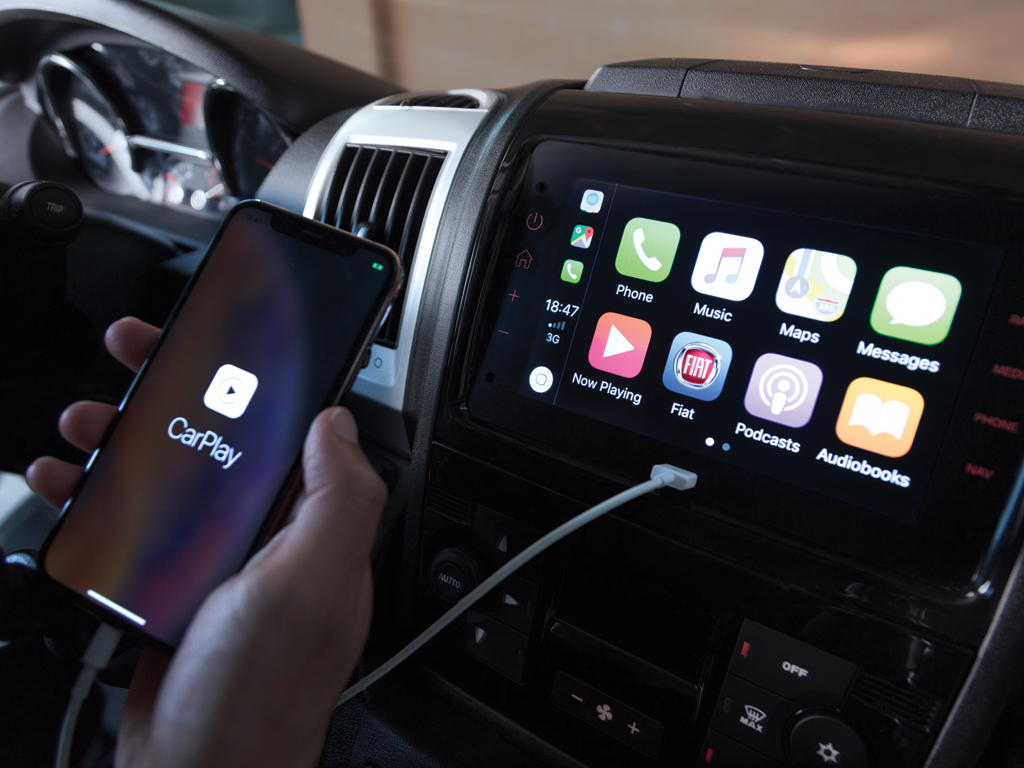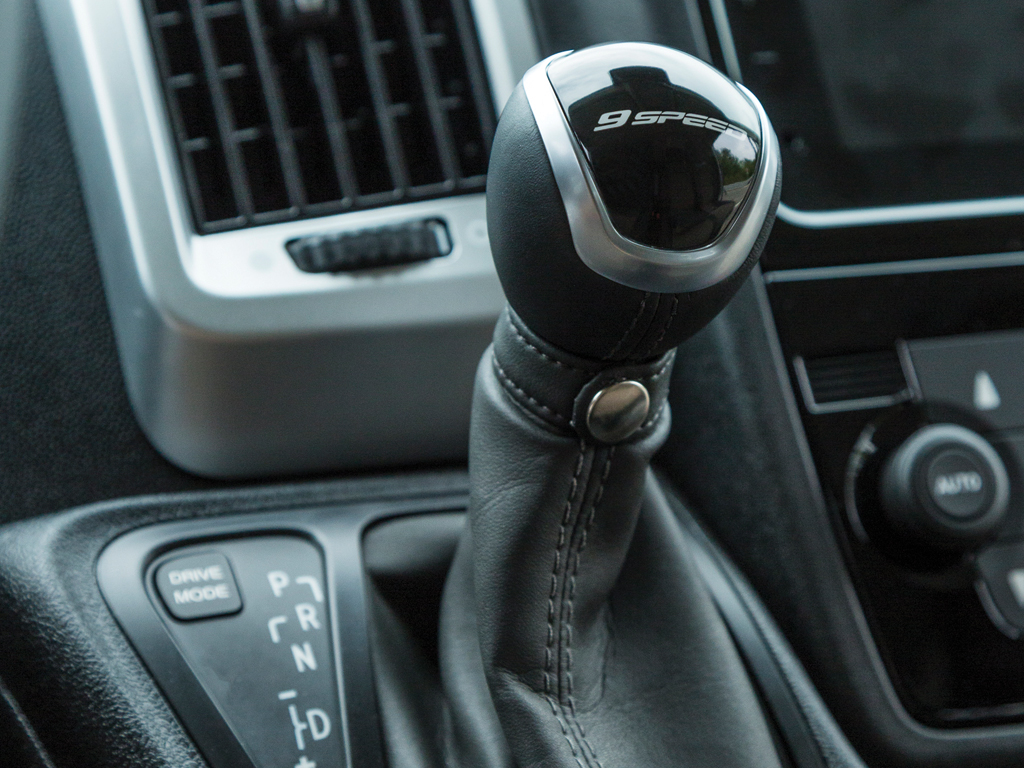A nine-speed automatic transmission leads the list of upgrades for the latest Ducato, says George Barrow.
SECTOR Large van Power 120-180hp Load volume 8-17m3 GVW 3,000-4,250kg
Fiat has revamped the Ducato, adding new engines and a nine-speed automatic transmission option, to help revitalise the ageing model. Unlike most mid-life updates, Ducato gets relatively few exterior changes. New trim for the grille and around the headlights are the extent of the alterations externally, while on the inside there are sparingly few changes too.
Apple CarPlay and Android Auto connectivity are now incorporated
as part of an update to the infotainment system. While the screen is touchscreen, it’s a tiny 5-inch unit for now, with a larger 7-inch version arriving in September to include greater connectivity with the Mopar Connect app and Mopar Connect Fleet software package to monitor vehicle status.
Additional driver assistance systems have been added, including Blind Spot Assist, Rear Cross Path detection to identify approaching vehicles while reversing from a parking space and Full Brake Control to provide emergency braking in the event of an imminent collision. There’s also traffic sign recognition, lane departure warning and a tyre pressure monitoring system.
Three trim levels are available with standard, Tecnico and Sportivo options. Base vehicles get Bluetooth, electric heated door mirrors and a driver’s seat with lumbar support and an armrest as the most notable features, while Tecnico adds the touchscreen, DAB radio, sat nav, air conditioning, rear parking sensors and cruise control. Sportivo includes a reversing camera, LED daytime running lights, metallic paint and alloy wheels amongst the extras.
The most important changes are of course to the driveline, with further updates to the Multijet II engines enabling them to now meet Euro-6d emissions regulations. The range topping 3.0 litre is replaced by an updated version of the 2.3 litre, with variable-geometry turbo, that now provides 120hp, 140hp, 160hp and 180hp. Entry-level 120hp engines deliver a maximum of 320Nm of torque at 1,400rpm – an increase of 10% compared to the previous 2.0-litre unit. Higher powered variants also get similar increases in torque, with the range-topping 180hp unit calling upon 400Nm when paired to a manual gearbox.
All outputs are equipped with a six-speed manual gearbox as standard, but 140hp variants and above now have the option of a nine-speed auto, which in the 180hp version enables up to 450Nm of torque from the engine. The previously EGR-only engine now includes SCR technology, in order to meet the new emissions regulations.
The new auto is undoubtedly the greatest improvement to the Ducato, providing reasonably fast changes with a high level of comfort. Three different driving modes are possible with Normal, Eco and Power. The Eco mode prefers to hurry through the gear changes to provide the most efficient drive possible, while Power holds the gear longer, allowing faster progress. Leave it in Normal and auto mode, rather than the manual shift setting, and it is an accomplished gearbox and a notable addition to the range. The closely spaced ratios make for much lower engine revs and therefore less in-cab noise, while the new engine is well suited to it in both the 140hp and 180hp versions we tested.
Less impressive is the six-speed manual, which feels notchy and needs a firm hand through the early gear changes. Steering and ride comfort are unchanged, which is no bad thing, as the Ducato has matured into a well-rounded albeit rather uninspiring van. Nevertheless, the standard suspension settings are quite firm which does translate to a lot of in-cab bounce while the steering is fairly numb to the road below.
Dimensions and load capacity remain unchanged, but payload is down slightly due to the addition of AdBlue tanks and other bits, adding roughly 30kg to the overall weight. There are, however, a new set of LED lights for the loadspace.
Rather than a complete overhaul, Fiat has concentrated on the bits that will deliver the most rewards in the context of their required emissions updates. The new engine is versatile and on paper frugal too, but the nine-speed auto is an option that elevates Ducato across the board.
FIAT DUCATO BEV
Ducato will become the first full electric model in the Fiat portfolio and promises to better the range of any current large e-LCV on the market. Power will come from a 122hp motor with 280Nm of torque, while a modular battery pack will enable operators to choose between a 136-mile claimed range, to a sector leading 223-mile range, thanks to battery capacities from 47kWh to 70kWh.
The Ducato BEV (battery electric vehicle) will support fast charging, enabling a 30-minute charge to add around 60 miles of range. It will be assembled in-house by Fiat, off the production line in a sub-assembly area.
The Ducato is well-known to be generous when it comes to payload, and while complete figures of payload for the BEV variants have yet to be released, Fiat says a best-in-class payload of 1,950kg will be possible. Load volume remains unchanged due to the batteries being housed between the wheels and under the floor.
Fiat believes that more than 25% of the van segment is ready to go electric and has conducted more than 620,000 miles of testing over the course of a year with 4,000 vehicles to determine the usage patterns of LCVs. As a result, a pilot scheme will initially be launched for the electric Ducato with selected Fiat Professional customers trialing the vans.
Pricing has yet to be released, but Fiat believes the TCO will be on a par with the diesel-engined Ducato, so expect higher upfront costs, off-set with cheaper running costs.





